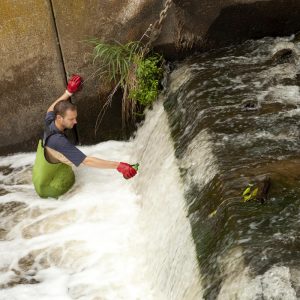Ecology Diploma Level 3
This Ecology course is for those interested in the many careers associated with Ecology and Conservation.
Ecology is the scientific study of interactions among organisms and their environment, such as the interactions organisms have with each other and with their abiotic environment.
The course explores Ecosystems, Biodiversity, Organisms, Populations, Habitats, Trophic levels, Pollution and Environmental problems.
*You will have access to the course for 6 months only. You can purchase course extensions.
Module 1
An introduction to Ecology: Organisms, populations and communities
This module explores the nature of ecology and the ecological principles that govern the ecology of individuals and populations along with the evolutionary processes that drive these interactions.
Learn about: a) The individual organism, The nature of ecology, The study of ecology; Looking at the individual; Autotrophs, heterotrophs, metabolic rate, growth, reproduction & Autecology.
b) Living in a population: Population dynamics; dispersal, birth and death, studying populations, evolutionary strategies & sociobiology.
c) Living in a community: Community concept; recognition of communities, structure of communities & behavioural interactions between members of the same community.
Module 2
Habitats and niches
Explore the ecological principles that define a habitat and a ‘niche’. Understand the differences between some of the terrestrial and aquatic habitats.
Learn about: a) 2.1 Defining a ‘habitat’, Physical make-up of a habitat, ‘the environment’; physical environment, geology and soil, topography, light and temperature, climate and weather.
b) The principles of a ‘Niche’: What is a niche? Determining niches, competitive exclusion, co-existence, fundamental and realised niches & resource partitioning
c) Terrestrial and aquatic habitats: Forests, grasslands, deserts and rainforests and their defining factors; plant structure, leaf types, plant spacing and climate. Bogs, ponds, lakes, rivers, streams, reefs, rock pools & oceans.
Module 3
Ecosystems and biomes
Learn about ecosystems and the principles that maintain an ecosystem and the key principles that govern succession. Learn about the ways that ecosystems change over time. This ecology course module also explores biomes and the environmental patterns which govern them.
Learn about: a) Ecosystems: What is an ‘ecosystem’? Interrelationships of ecosystems, ecosystem health, community interactions & biodiversity.
b) Succession: Mapping the ways in which ecosystems change over time: Vegetation changes, causes of change, primary seres, patterns of succession & Human influence on succession.
c) Biomes: the global ecosystems: How many different biomes are there? Different types of biomes, biome patterns, terrestrial biomes, freshwater biomes & marine biomes.
Module 4
Trophic levels and Nutrient cycling
This ecology course module explores the interactions between trophic levels and how nutrients are recycled in an environment. This ecology course module also deals with the problems associated with various types of pollution.
Learn about: a) Trophic levels: Why study trophic levels? Autotrophs, decomposers, food chains, food webs, pyramids of numbers, pyramids of biomass.
b) Nutrient cycling: The carbon cycle, the greenhouse effect, nitrogen cycle, phosphorus cycle & interactions between the nutrient cycles.
c) The problems with pollution: definition of ‘pollution’, Different forms of pollution, eutrophication, heavy metal toxicity, alkaline wastes, acid rain, pesticides, CFCs and the ozone layer.
Module 5
Biodiversity
Learn about the differences between genetic, species and ecosystem biodiversity and about the key principles that control and maintain biodiversity
This module also explores the major threats to biodiversity and how these threats may have an impact upon entire ecosystems.
Learn about: a) What is biodiversity?: Levels of biodiversity; genetic variation, species variation and ecosystem variation within a niche, habitat, ecosystem, biome, or across the planet.
b) Principles of biodiversity: Why is biodiversity important? Distribution, evolutionary biodiversity, biodiversity and ecosystem services.
c) Threats to biodiversity: Habitat loss, habitat degradation, rapid environmental changes, pollution & species loss rates.
Module 6
Environmental problems and Protecting the Environment
Learn about the environmental problems that cause a threat to ecosystem health and how various methods of environmental protection and conservation can defend the environment from threats. Learn how ecosystem management and restoration can promote biodiversity and improve ecosystem health.
Learn about: a) Environmental problems: An expansion of module 5, The Evil Quartet, Habitat destruction, invasive species, overexploitation & climate change.
b) Protecting the environment: Conservation and protection: Conservation of a species, conservation of an ecosystem, conservation of the biosphere, Legal protections & what can humans accomplish as individuals?
c) Promoting biodiversity: Ecosystem management and restoration: Removing exotic species, managing a habitat, removing and preventing pollution & Habitat improvement
We offer a selection of accredited and employer recognised courses specifically designed for careers working with animals.
If you have any questions about our courses, please contact us.
We’ve assisted many people to achieve their goal to work with animals. Read more about our 5-star reviews and student success stories.
Gain relevant training to achieve your goal to work with animals.


